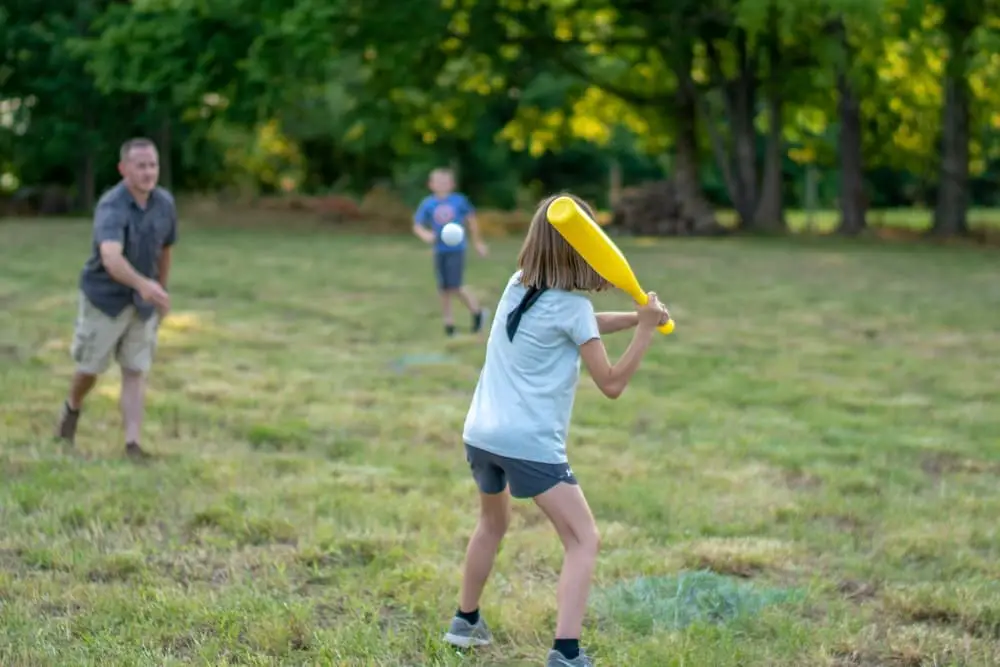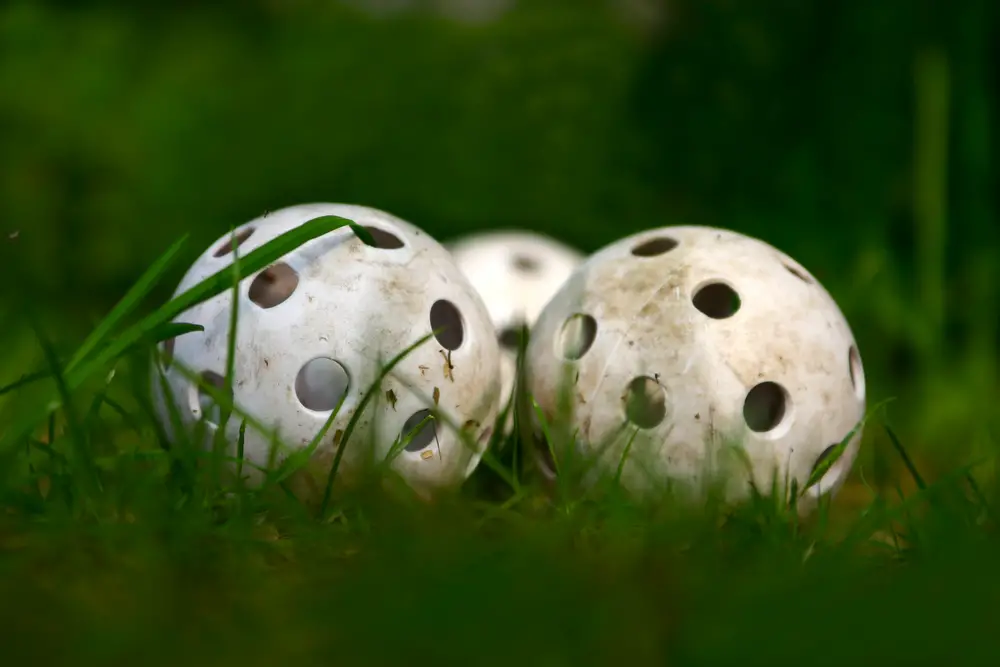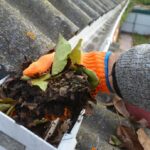A favorite pastime of many families is playing sports in the backyard. Whether it’s touch football or throwing a frisbee around, there are endless ways to stay active in your backyard.
If you want to play a more organized sport, consider playing wiffle ball. Wiffle ball is a sport similar to baseball but requires much less space and can be set up much more quickly. You can have a game ready to go in no time, and it doesn’t take much to prepare!
Wondering how to make a wiffle ball field in your backyard? This article will explain wiffle ball and everything you need to know to get a game going in your yard this summer.
What Is Wiffle Ball?
Wiffle ball isn’t a popular sport everywhere. So before discussing how to make a wiffle ball field, let’s first explain what precisely wiffle ball is.
Wiffle ball is essentially a scaled-back version of baseball created in the 1950s and popularized in the 1960s. It is meant to be played in confined spaces, making it the perfect sport to play in your backyard.
Similarly to baseball, wiffle ball is played with a bat and a ball. However, what makes it different from traditional baseball is that the bat and ball are made of plastic and lightweight to accommodate the short distance.
Here’s how a game of wiffle ball works: Two teams of one to five players each try advancing imaginary runners to home plate based on where each batter hits the ball. A ball hit about thirty feet counts as a “single,” and a ball hit about 45 feet counts as a “double.” A ball hit across the field lines is considered a “home run,” and a ball hit outside the triangle is a “foul ball.”
The main difference between baseball and wiffle ball is that there is no running around the bases for the batter and, consequently, no chasing the ball for the pitchers and fielders.
As you can see, the game of wiffle ball is quite simple. If worse comes to worst and you can’t find a bat, you can use any type of stick to play the game, such as a broomstick. The most important part of the game is the field, so let’s look at what exactly is needed for a wiffle ball field.

Wiffle Ball Field: The Basics
The layout of the field for wiffle ball is a little different than a baseball field layout due to the smaller size of a wiffle ball field. Here are a few of the key differences between a baseball field and a wiffle ball field:
- Wiffle ball can be played on any surface, from grass to asphalt, so it requires minimum landscaping to your backyard.
- The pitching circle of a wiffle ball field is flat without a mound of elevated area.
- In a wiffle ball field, the strike zone is directly behind the home plate along the field centerline.
With these differences in mind, let’s look at the basics of making a wiffle ball field in your backyard.
Wiffle Ball Field: The Basics
The wiffle ball field you choose to build will depend on the size of your backyard. However, it’s essential to know the components of a wiffle ball field when learning how to make one. A complete wiffle ball field must contain the following areas that are essential to the game:
- Infield square: This is the portion of the wiffle ball field. It is formed by the home plate and three bases at the corners.
- The bunt zone: Also known as the dead zone, the bunt zone is inside the front end of the infield square and is an arched area enclosed by the left and right foul line.
- Home circle: This is where the home plate is located and is between the left and the right batter’s boxes. It is a five-sided white rubber with a rectangular and triangular end.
- Strike zone: Found directly behind the tip of the home plate along the field centreline.
- Pitching circle: There is no pitching mound on a wiffle ball field; for this ball game, the pitching circle is flat without a mound of elevated area.
- Foul lines: Found on the left and the right of the field.
You’ll also need to create arches for the different zones, which include:
- Bunt zone (dead zone)
- Singles zone
- Doubles zone
- Triples zones
- Home run area
Although some wiffle ball leagues have set dimensions you must adhere to, you can make a wiffle ball field out of whatever space you have available.
Now, let’s dive into how to make a wiffle ball field in your outdoor space.

How to Make a Wiffle Ball Field
Learning how to make a wiffle ball field is simpler than you may think. To start, you’ll need the following materials:
- Either chalk or paint for the line markers – depending on whether you’re working with grass or paint
- A measuring tape
- Home plate
- Pitcher’s plate
To play, you can easily order a set of wiffle ball bats and balls, which are usually inexpensive.
Here’s a step-by-step guide on how to make a wiffle ball field.
1. Measure Your Home Run Area
The best way to start making your wiffle ball field is by measuring from the outer boundary of the field. The home run line is flexible, and if you already have a bush or fence at the end of your backyard, you don’t have to draw an additional line as long as the barrier is high enough. Depending on the size of your yard, the home run line should have a width of at least 20 feet.
2. Mark Your Foul Lines
The next step in making a wiffle ball field is to mark your foul lines on the left and the right. Measure down the foul lines from the home run point to the home base. Once again, depending on the size of your yard and how far back your home run area is, you should aim to have this line be at least 60 feet. If needed, your left and right foul lines can be different lengths.
3. Mark Your Zones
Once you have your home run area and foul lines measured, it’s time to mark your zones: dead zone, singles zone, doubles zone, and triples zone. The bunt zone is around the home plate and should be around five to 15 feet away from the home plate. The singles zone should be 20 to 45 feet, the double zone about 20 feet past the singles zone, and the triple zone 20 feet beyond that.
4. Add a Pitcher Plate and Batter Box
If you want a more precise field, you can choose to add a pitcher’s plate in the single zone and a batter box centered top and bottom to the home plate.
Once you finish this final step, your field is ready to go for a wiffle ball tournament with the kids! You can add a few final touches, such as a scoreboard or even a crowd viewing area to create your own little wiffle ball stadium.
The Takeaway: Wiffle Ball Is Fun for Everyone
Wiffle ball is one of the best outdoor games around. It is a fun sport for the whole family to get into, and it’s so simple to set up. Hopefully, this article has shown you that learning how to make a wiffle ball field is easier than you think, especially in your own backyard. Better yet, you can temporarily set up your wiffle ball field and have your backyard back in no time!






